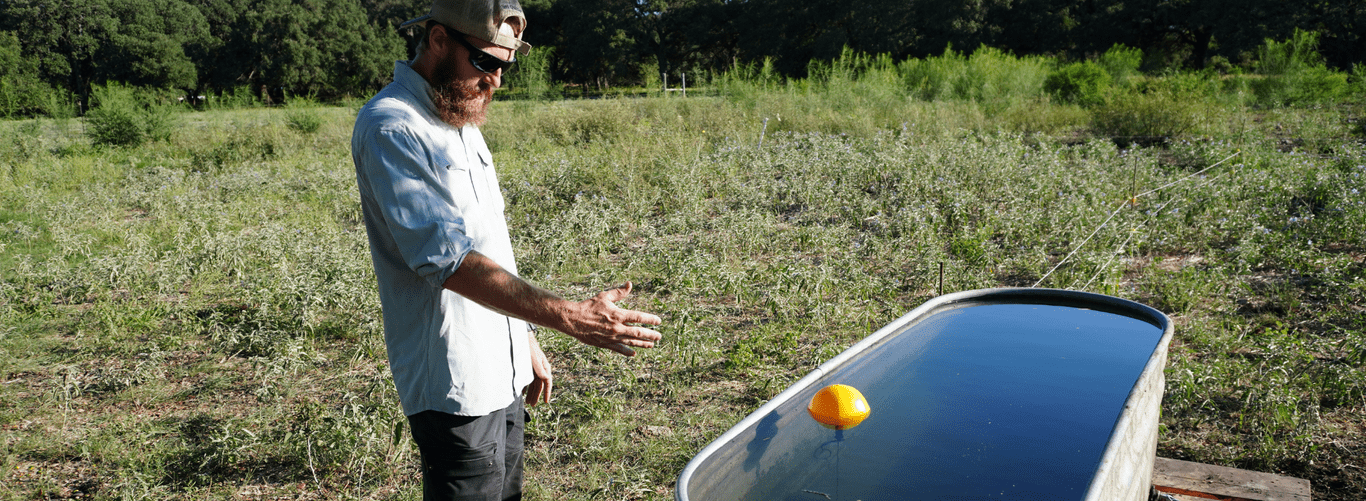
Livestock Watering System Tips and Tricks
A livestock watering system shouldn't be too complicated. It should fit together like a lego set with each piece strong enough to prevent point of failure. Make sure your pipe fittings are durable and securely in place, with end cap and tank watering locations carefully thought out. Be sure to scope out your farm field to determine the best place for livestock watering by observing soil erosion, livestock patterns, and water piping requirements. Choosing low lying areas for your livestock watering locations can result in excess mud/erosion that can be difficult to control without frequent livestock rotation, seeding, and heavy resting periods for your paddocks.
The installation of a livestock watering system may be daunting at first, but when you've figured out your equipment requirements, it becomes pretty simple. The diameter of your piping will have to do with your water pressure/durability concerns, and the amount of fittings you choose will depend on your own unique grazing plan. We're always happy to offer recommendations on pipe diameter, fitting type, or any other concerns you may have about a field watering system. In the meantime, here are some design tips to keep in the back of your mind.
livestock watering design quick tips:
-
Livestock Watering Source: Identify depth of well, distance of spring, or any other factors that impact your livestock watering capacity
-
Product Strength: Ensure all fittings and livestock watering materials are of the highest quality.
Water Pressure & Float Valve: Make sure your watering system is driving adequate water pressure throughout your line. Make sure your float valve system is delivering adequate volumes of water to your water tank system.
- Fittings & Points of Failure: Ensure all fittings are tightly fastened and protected from elements. Ensure the caps for your water line are tightly in place and not leaking due to excess pipe water pressure.
-
Geography: Going uphill will require more water pressure while going downhill will relieve the pressure needed. If you have to climb a lot of hills with your water line, consider wider diameter livestock watering pipe.
- Temperature: While our fittings are very durable, cutoff locations are still vulnerable to temperature change. If you are in a cold area, make sure your line is buried 5-12 inches to ensure it is protected from the cold, and maintain your tank connection areas to ensure cracking does not impact the integrity of your line.
These videos reference Powerflex livestock watering setup. We do not own this video content:
Quality livestock watering Fittings Help Prevent Points of Failure:
How much diameter should my livestock watering pipe have?
The diameter you need to pipe water to your livestock depends on a variety of factors.
- Existing Pressure. If you have a pressure gage for your existing home water, evaluate the pressure. If your water pressure is already quite weak, you may need to look into getting a new pump for your water source so that your livestock watering system has adequate flow.
- Elevation Change. How much does your livestock watering pipe have to go uphill? If you are watering down a hill, smaller diameter piping can adequately carry the water to your livestock.
- Tank Volume. With larger livestock watering tanks to fill, you may opt into a higher pressure water line to ensure the tanks can refill swiftly when emptied or cleaned.
- Pipe Lenght: Even with favorable elevation, it's important to consider the length of your livestock watering line. If you are watering many acres of farm field, having some percentage of your system in wider diameter piping can help you relieve water pressure concerns.

-
Polyethylene (Poly) Tanks : These tanks are made from durable poly plastic and come in various shapes, including round and square. Poly tanks are lightweight, easy to transport, and resistant to rust and corrosion. They are suitable for both above-ground and below-ground installation. Their UV-resistant properties make them ideal for outdoor use without too much deterioration.
-
Galvanized Stock Tanks : Galvanized steel tanks are sturdy and long-lasting. They have a protective zinc coating that prevents rust and corrosion. These tanks are often used for larger livestock, such as cattle and horses. They come in round or oval shapes and can be placed above ground or partially buried.
-
Round Steel Tanks : Made from galvanized steel, round steel tanks are suitable for heavy-duty use. These tanks are available in various sizes and can withstand harsh weather conditions.
-
Cement tanks: Cement tanks or concrete reinforced tanks are also used in large livestock operations, and some may choose to repurpose old concrete spring tanks as livestock watering tanks.
-
Tire tanks: Some livestock watering systems use tire tanks, as pictured. This can be a economical way to save money on tank volume if you have the resources at hand.


Leave a comment